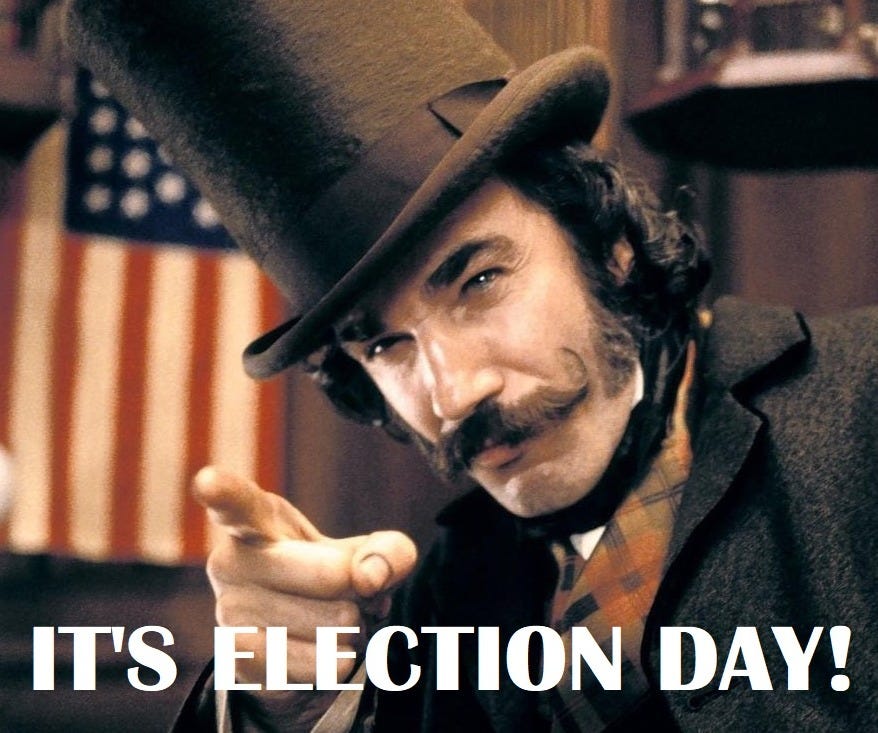Decision Day for the Musk Model
If the Musk Model proves successful, it could signify a further shift in how U.S. campaigns are run, reminiscent of the gritty, transactional canvassing seen in Gangs of New York.
One Day to Go: We’re one day away from an election that’s a complete toss-up according to several prediction models. The usual polarization and differences between the candidates are clear, but this election is also a test of the Musk Model of canvassing.
Traditional Canvassing 101
At its core, canvassing ideally revolves around community-focused, issue-driven engagement. Historically, mass-party canvassing reached its peak in the middle of the 20th century, with ideological-based parties organizing large membership-driven campaigns run by volunteers and funded by party dues. This grassroots model gave canvassing a civic element, fostering public trust and ownership of political causes, at least in democratic theory. In reality, however, it is often a different conversation if this indeed leads to responsible government with high levels of public trust and engagement.
The Decline of the Mass Party
Technological developments, such as television ads and, more recently, social media transformed canvassing. Campaigns became more dependent on external funding, shifting from grassroots models to donor-funded, media-focused strategies. While remnants of the mass-party model still persist in Western Europe, where campaign finance laws limit corporate donations or link public funding to election results or membership numbers, the U.S. has seen the opposite trend, with private funds playing an increasingly central role.
Canvassing in the Democrats’ 2024 Campaign
Despite this long-term trend, the Democrats under Kamala Harris have invested heavily in traditional canvassing, focusing on local organizers, community engagement, and relationship-building to reach voters. Harris’s campaign has emphasized the power of face-to-face interactions and grassroots mobilization. Her team works with local activists, union and community leaders, aiming to create bonds and build lasting support rather than relying on high-cost gimmicks or rewards.
Musk’s Unconventional Approach
Musk’s model is very different. His super PAC, America PAC, is built on the power of personal fortune and transactional incentives. Musk is pouring millions into paying canvassers, often with short-term contracts and cash rewards for signed petitions. The Model deploys armies of paid canvassers, with many reportedly targeting undecided or low-propensity Trump supporters in battleground states. With payments for each door knocked and a lottery system for petition pledges, the Musk Model prioritizes high-volume outreach over deep voter engagement.
A Return to Vote-Buying
The Musk Model draws eerie parallels to clientelistic practices in developing countries, where votes are often bought with cash, gifts, or favors rather than ideological appeal. This echoes 19th-century America, where political machines like Tammany Hall incentivized votes with cash and goods, creating a patronage system portrayed vividly in Gangs of New York. Musk’s approach encourages transactional loyalty, treating votes as commodities rather than expressions of civic duty. And as in the past, the Achilles Heel of clientelism is its enforcement: Fraud is high among unmotivated paid canvassers who lack conviction for the Trumpian cause, and there is no enforcement mechanism ensuring that petition signers show up to the election or vote for Trump.
Which Model Will Win?
Tomorrow’s results could show us whether traditional canvassing or Musk’s high-spending, high-pressure approach is more effective. In 2016, Democrats were said to have the groundwork advantage, but Trump’s victory suggested this advantage didn’t necessarily translate to votes.
The academic literature also suggests that canvassing has, at best, minimal effects. In my own research, I find that canvassing can have substantial effects lasting beyond election cycle but only if the strategy and conditions are right.
The Future of Campaigning
Should Trump win, especially with strong numbers in areas heavily targeted by Musk’s canvassers (Pennsylvania, but also Georgia and North Carolina), this model could be credited, at least in the public eye, with delivering the victory. If that happens, we could see a wave of copycats relying exclusively on transactional campaigning in the future.
Thus, tomorrow’s election is not just a choice between Trump and Harris; the election is also pathbreaking for the future of campaigning. If the Musk Model prevails, the era of grassroots canvassing may be dead and we see the rise to a not so new age of transactional loyalty, in which all aspects of canvassing are commodified.

